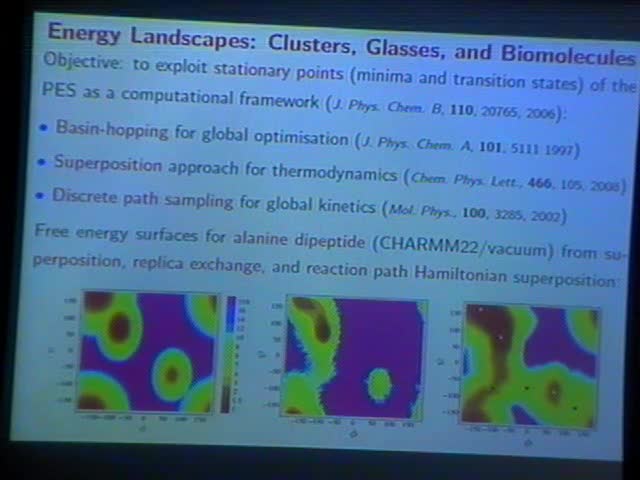Energy landscapes of clusters, glasses, and biomolecules
Presenter
May 19, 2009
Keywords:
- Energy
MSC:
- 74Gxx
Abstract
Coarse-graining the potential energy surface into the basins of
attraction of local minima, provides a computational framework for
investigating structure, dynamics and thermodynamics in molecular
science. Steps between local minima form the basis for global
optimisation via basin-hopping and for calculating thermodynamic
properties using the superposition approach and basin-sampling. To treat
global dynamics we must include transition states of the potential
energy surface, which link local minima via steepest-descent paths. We
may then apply the discrete path sampling method, which provides access
to rate constants for rare events. In large systems the paths between
minima with unrelated structures may involve hundreds of stationary
points of the potential energy surface. New algorithms have been
developed for both geometry optimisation and making connections between
distant local minima, which allow us to treat such systems. Applications
will be presented for a wide variety of atomic and molecular clusters,
glass-formers and biomolecules. Results for folding, misfolding and
aggregation of peptides and proteins illustrate how experimental time
and length scales can now be addressed for such systems.
